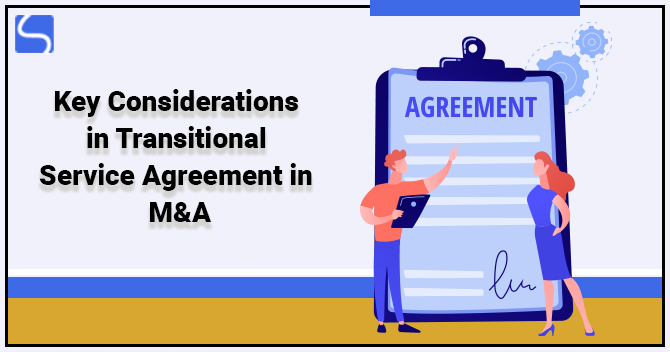Preparing an Amalgamation Agreement of Two Companies – An Overview

Karan Singh | Updated: Jul 16, 2021 | Category: Mergers and Acquisitions
Nowadays, we see most of the companies established and grow contributing towards the advancement or development of several nations and highlighting the idea of globalisation. These days we can also see that the desire of the entities to grow rapidly and spread their business around the world. This has increased the appearance of the idea of amalgamation of companies for both the growth and development of the companies and the society. In this write-up, we shall discuss the meaning of amalgamation, amalgamation agreement and why is it necessary, vital provisions while drafting the agreement, and well-known examples concerning the amalgamation of companies.
Table of Contents
What is the Meaning of Amalgamation of Companies?
Amalgamation can merely be described as two companies or entities combining with each other and establishing one company. Amalgamation can be determined as the process of merging two or more companies together to establish a new large company or organisation. According to Section 2(1B) of the Income Tax Act, 1961[1], the companies’ amalgamation shows that the combination of one or more companies with another company or the merger of two or more companies to establish a new one. For example, there are two companies, Company A and Company B, and through the amalgamation process, they join together and elevate another company called Company C. This process of joining two or more companies together is called amalgamation of companies. An entirely new company with separate legitimate existence is formed by combining the liabilities & assets of both companies. Generally, this amalgamation happens between entities that have the identical nature of business or activities.
Amalgamation Agreement – Meaning
An amalgamation agreement is a legitimate agreement or an officially binding document between the parties who have decided to amalgamate their relevant companies, and the agreement consist of:

- Information Regarding the New Formation: The agreement consists of the new name of the association, the Registered Office, the new company’s purpose, and BODs (Board of Directors).
- Lawful Proceedings: The amalgamation agreement must comprise clauses that state the redressal solutions for the arguments that could possibly arise, let it be within the company wherein, whether one of the directors take legal action against the company or the company sues one of them or could be external issues wherein an outside party sues the company.
- Dates: The agreement should comprise the date from which the new company comes into action.
- Financial Statements: The amalgamation agreement must have a section presenting the economic history of the past organisation showing the records of at least the previous three years. It should comprise the organisation’s projects.
- Parties Involved: Shows the parties to the specific agreement.
- Vesting and value of the Company: The agreement must obviously state the company’s correct and fair value in terms of liabilities & assets. It should include Intellectual Property such as Trademarks, Patents, Copyrights, exclusive technology, etc.
- Recitals: The amalgamation agreement should comprise recitals to outline their intention or provide a legitimate or accurate background as to why they are contracting.
- Explanations: Comprises all the vital descriptions for the agreement to have a clear understanding of the meaning of the given words.
Importance of Amalgamation of Companies
The amalgamation of companies has numerous advantages when we look into current market situations wherein the market is constantly developing, growing, and changing at a quick rate. Some of the crucial benefits are listed below:
- Good Resources: Most of the time, amalgamations lead to companies getting numerous extra resources such as human resources, technology, managerial ability, production capacity, etc., that could now be shared as the entities have been combined and could use them to the fullest.
- Competition: It plays an essential role in benefiting the amalgamation wherein:
- The competition could reduce in the market if the entities used to deal in similar lines of business or the identical business nature.
- The competition level could be increased when the newly established company would be all the more competitive and would force the other entities in a similar industry to improve their game to stay applicable in the market.
- Growth: In this situation, the entities have combined, and when these entities work in unison, it increases the possibility for the development of not only the entity but the society also. They could use their skills & resources efficiently & effectively to grow. For instance, when an amalgamated giving rise to better equipment & technology, financial resources, managerial skills & abilities, good & substantial human resource, and an enormous market.
- Better Cost-Efficiency: The business investments lot of money to finish the different activities of the company like:
- In terms of cost of operation (the costs involved in executing regular activities of the business) could be decreased as the production scale would have possibly increased, leading to lesser wastage & better use of resources.
- In the case of financial cost (costs involved in borrowing funds for the organisation), it aids them to borrow funds at a lesser interest rate and also increases their solvency.
- Tax Planning: Amalgamation opens more options for tax saving like:
When one of the amalgamated companies has gathered business losses.
- An amalgamated entity can get many tax advantages, especially when a loss-making company amalgamates with a profit-making company.
- When one of the amalgamated companies enjoys a subsidised taxation rate. These two conditions will benefit the entity in decreasing the tax amount.
Why is the Amalgamation Agreement Significant in the Amalgamation of Companies Process?
An amalgamation agreement, printed on a legal paper or a stamp paper, acts as an officially binding document that states the terms & conditions of the amalgamation under its different clauses & sections. Many documents like MOA (Memorandum of Association), AOA (Article of Association), etc., are examined to create an amalgamation agreement that increases the authenticity of this document.
Since it’s two or more entities blending to create one company, there might be possible chances of disputes, and those turn disorganised if such a document doesn’t talk regarding what has to be done in case of argument and also state the number of each company’s assets has contributed for the establishment of the company. Hence, the document acts as a peace maintainer for the companies or entities.
Significant Provision while Preparing an Amalgamation Agreement
An amalgamation agreement comprises terms & conditions that are going to bind the companies for the future lawfully. An amalgamation agreement includes:
- Preamble: The agreement’s preamble contains:
- Title of the amalgamation agreement.
- Execution date – The date when the agreement was performed.
- Abbreviations – It consists of the various abbreviations and their definitions used in the agreement. Such as “Board” or “Board of Directors” means the BODs of the amalgamated corporation.
- Execution Place – This indicates the place at which the proposed agreement is signed.
- Name & Address of the People Linked – The amalgamation agreement should have the name and the address of the people linked with the partners or firm.
- The Parties – Parties are involved clearly described, and the word used to refer to them in the agreement is also described. If the agreement is between HIJ Corporation & EFG Corporation, then not only are their names mentioned but also there in the bracket it is described as (hereinafter referred to as “EFG”) for EFG Corporation or any such word that could be used to recognise them.
- Recitals: It includes a short story of this amalgamation which comprises their business background, history, the objective behind the agreement; the story is mentioned in the recital.
- The parties aim to effect a merger of the operations & shareholdings of HIJ and EFG Corporation.
- Sourced via the amalgamation of HIJ & EFG under the provisions of the Business Corporations Act and on the terms & subject to the conditions.
- In Consideration of the companies and the concerned covenants and agreements contained.
- Clauses: As we all know that this is the most considered upon part in any agreement where such clauses aid the company to endure via both good and unstable times. These clauses not only resolve the issues but also safeguard the parties. Remember that such clauses are lawfully binding, and it is vital to draft such clauses with extreme precision. The clauses could be those that would aid in operating the company in a better or delivering a solution mechanism when the entity faces a concerning problem that could have been predicted while preparing the amalgamation agreement.
Conclusion
Nowadays, companies are considered to be a vital factor for our society’s development. We have to know that such companies have understood the requirement to unite to grow where there is the presence of cut-throat competition. An amalgamation agreement aids them in deciding their attempts or efforts, managing their liabilities & rights and assuring obedience to the legitimate provisions as well as the code of conduct. Hence, the amalgamation of companies nowadays stands as a process/instrument that could take the company to new heights. They can improve the infrastructure, cost efficiency, competition level, managerial abilities, etc., and can alter economies and promote the business surroundings.
Read our article:What are the Reasons for Mergers and Amalgamation ?














